 Email: support@vespaagogo.com
Email: support@vespaagogo.comCultural Insights
- Home
- Travel Tips
Cyclo Vietnam: The Insider Guide to Vietnam’s Most Iconic Pedicab Experience
2025-11-24
The cyclo remains one of Vietnam’s most recognizable cultural icons. Even as cities modernize with high-rise skylines, metro lines, and millions of motorbikes, the cyclo continues to glide through historic districts, offering travelers a direct window into daily street life.
This guide explains everything you need to know about cyclo Vietnam today - meaning, history, pricing, safety, scams, where to find them, how to hire one, and a concise review of the best cyclo tours in Hanoi and Ho Chi Minh City.
What Does “Cyclo” Mean in Vietnam?
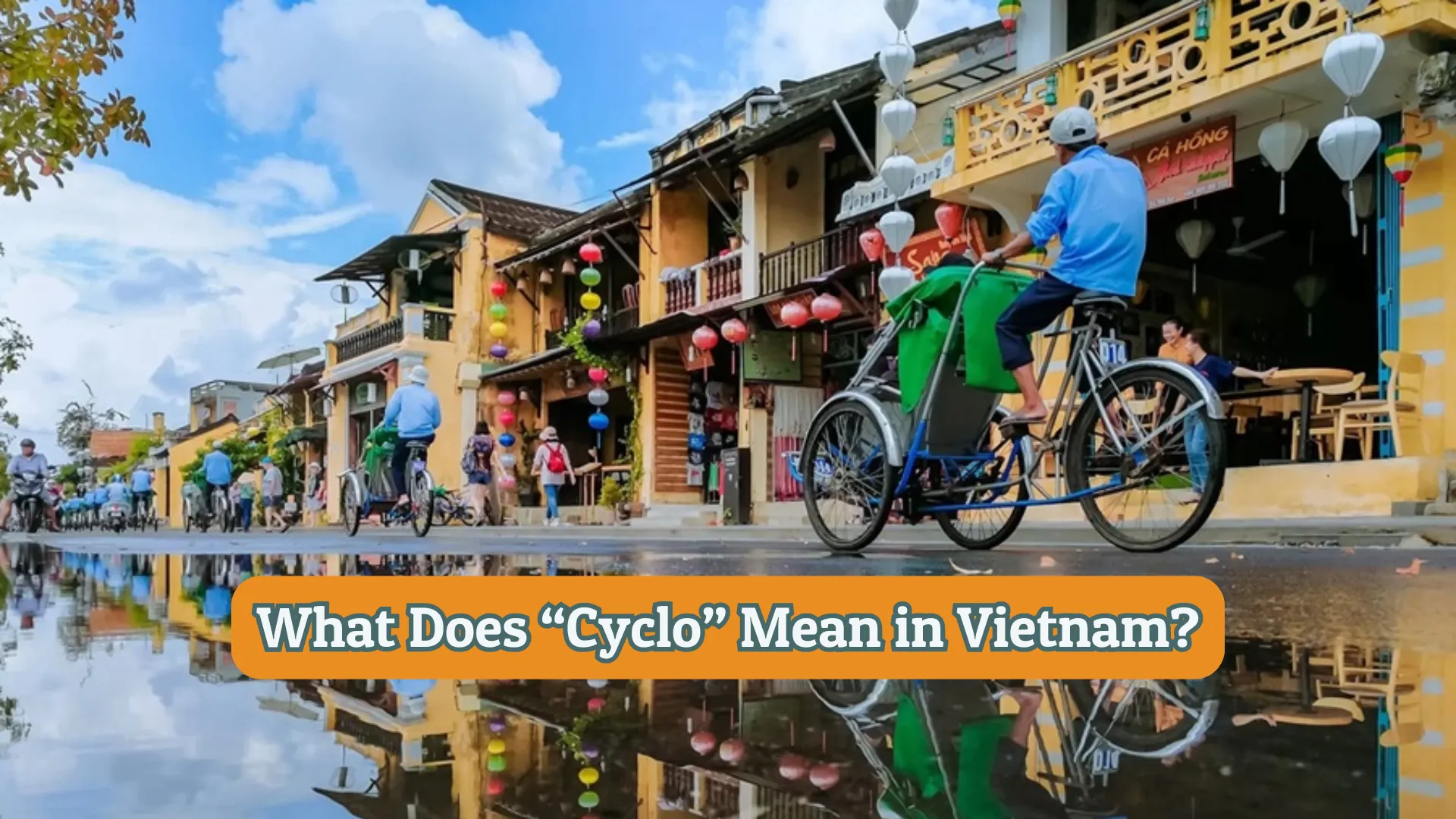
The term cyclo comes from the French cyclo-pousse (cycle-push). Vietnam adopted and localized the word into xích lô, referring to a three-wheeled human-powered vehicle where the passenger sits in front and the driver pedals behind.
This front-seat design is unique in Southeast Asia and significantly shapes the experience:
- The passenger has an unobstructed view of the streets.
- You travel at slow speed, giving you time to observe daily life up close.
- The design symbolizes Vietnam’s cultural habit of “placing the guest first.”
Today, cyclo Vietnam is used primarily in tourism and heritage zones. Though no longer practical for everyday transport, it remains a living symbol of urban Vietnam.
The History of The Cyclo in Vietnam
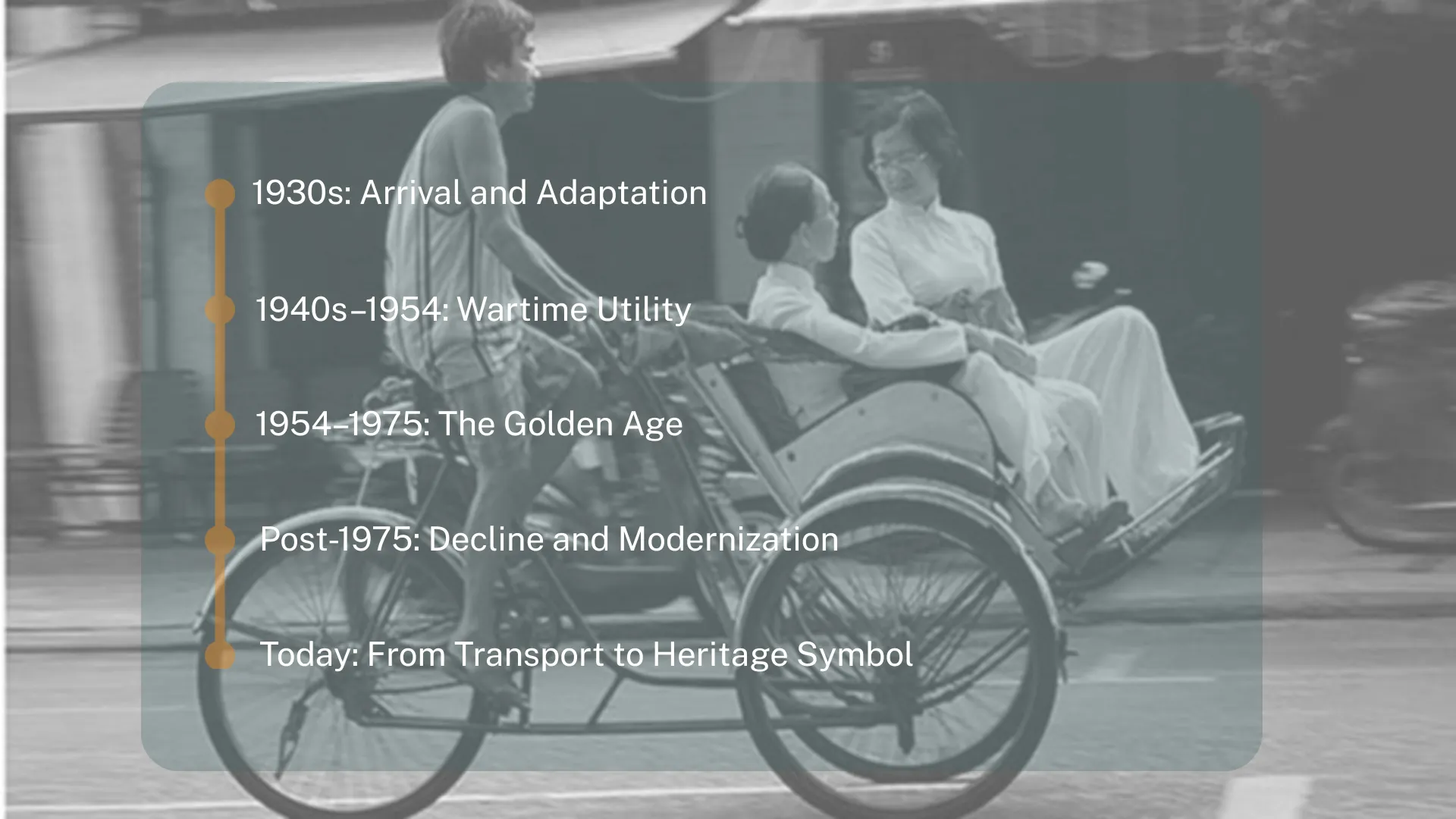
1930s: Arrival and Adaptation
The cyclo first appeared in Vietnam in the 1930s during the period of French Indochina. At this time, major cities such as Hanoi and Saigon were undergoing rapid urbanization, and the French were introducing new forms of transport to modernize the colony. Hand-pulled rickshaws had been common for decades, but they were physically demanding and symbolically tied to an older, more hierarchical era.
When the French imported the cyclo-pousse, Vietnamese craftsmen immediately saw potential. Instead of simply copying the original design, they modified and strengthened it to adapt to local needs:
- Thicker steel frames to withstand rougher Vietnamese roads.
- Wider front seating so passengers could sit more comfortably and safely.
- Improved wheel balance for easier maneuvering in narrow alleys.
By the late 1930s, this localized, sturdier version had become distinctly Vietnamese. The cyclo quickly replaced rickshaws in many districts, symbolizing a shift from human-pulled labor to pedal-powered mobility - a subtle but meaningful step in the country’s modernization.
1940s–1954: Wartime Utility
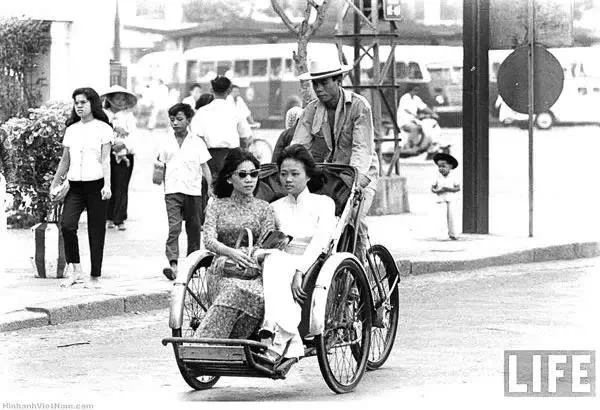
During World War II, the Japanese occupation, and the First Indochina War, fuel shortages across Vietnam made motorized transport unreliable. Cyclos became essential street vehicles. They transported:
- market goods and produce,
- newspapers and mail,
- schoolchildren, workers, and shopkeepers,
- even military-related supplies.
Despite the instability of the era, the cyclo remained dependable because it required only human strength. Many families relied on cyclo drivers to deliver essentials before sunrise, navigating through curfews, checkpoints, and damaged roads.
This period cemented the cyclo as not just a transport device but a lifeline for everyday survival.
1954–1975: The Golden Age

These two decades represent the height of cyclo Vietnam culture.
In Saigon:
The city was vibrant, cosmopolitan, and heavily influenced by both French and American presence. Streets like Đồng Khởi (Catinat), Tự Do (Rue Catinat), and Lê Lợi were lined with cyclos. They transported office workers, foreign correspondents, students in áo dài, and even diplomats between hotels, cafés, and government buildings.
Cyclos became intertwined with everyday Saigon identity. They appeared in newspapers, postcards, and early color photography - symbols of a city full of life, commerce, and contradictions.
In Hanoi:
The atmosphere was slower and more traditional. Old Quarter craftsmen used cyclos to move materials. Families relied on cyclos for weddings, funerals, and major celebrations. The narrow, shaded streets made cyclo speeds ideal; passengers could observe street vendors, lakeside scenes, and colonial villas without rush.
Across both regions, the cyclo was at the heart of urban mobility, shaping how people experienced city life before motorbikes took over.
Post-1975: Decline and Modernization
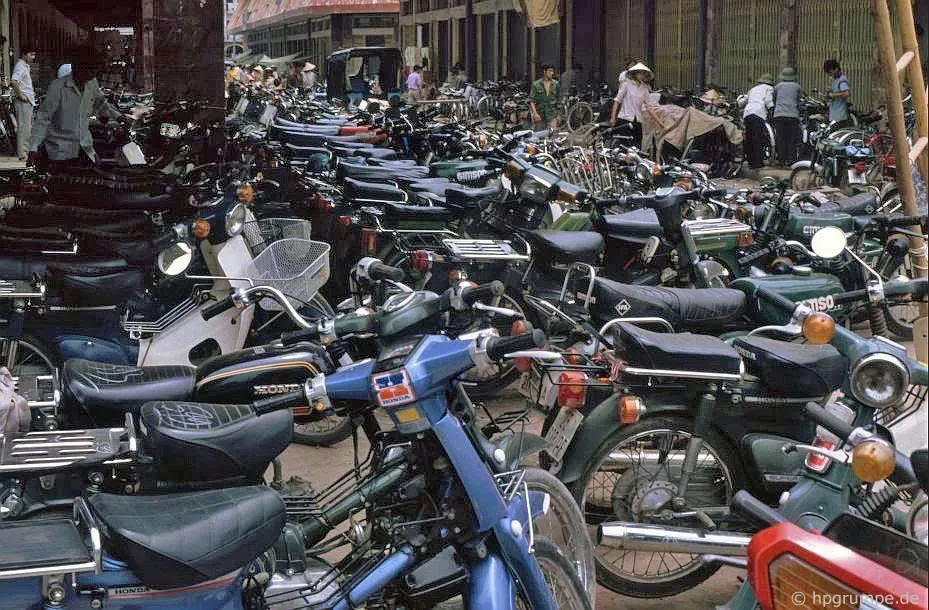
After reunification, Vietnam underwent profound economic challenges. Many imported goods became scarce, including parts for cyclos. At the same time, Soviet and Eastern Bloc motorcycles - cheap, durable, and easier to repair - began entering the country.
By the early 1990s, the rise of affordable Japanese motorbikes pushed cyclos out of daily transport. Streets became faster and denser, and cyclos struggled to keep pace with the city’s evolving rhythm.
By the 2000s, they were no longer practical urban vehicles and existed mainly in specific tourist zones.
Today: From Transport to Heritage Symbol

Now, the cyclo is recognized as a living heritage artifact.
- Hanoi regulates cyclo routes around Hoan Kiem Lake and Old Quarter.
- Saigon designates areas around the Opera House, Nguyễn Huệ, and the riverfront for cyclo operations.
- Many drivers today are elderly men who have been pedaling for 30–50 years and see the cyclo as both livelihood and legacy.
Riding a cyclo today is not simply transportation - it’s stepping into living history, experiencing a surviving piece of 20th-century Vietnam within a rapidly modernizing environment.
Why Cyclo Vietnam still Matters Today
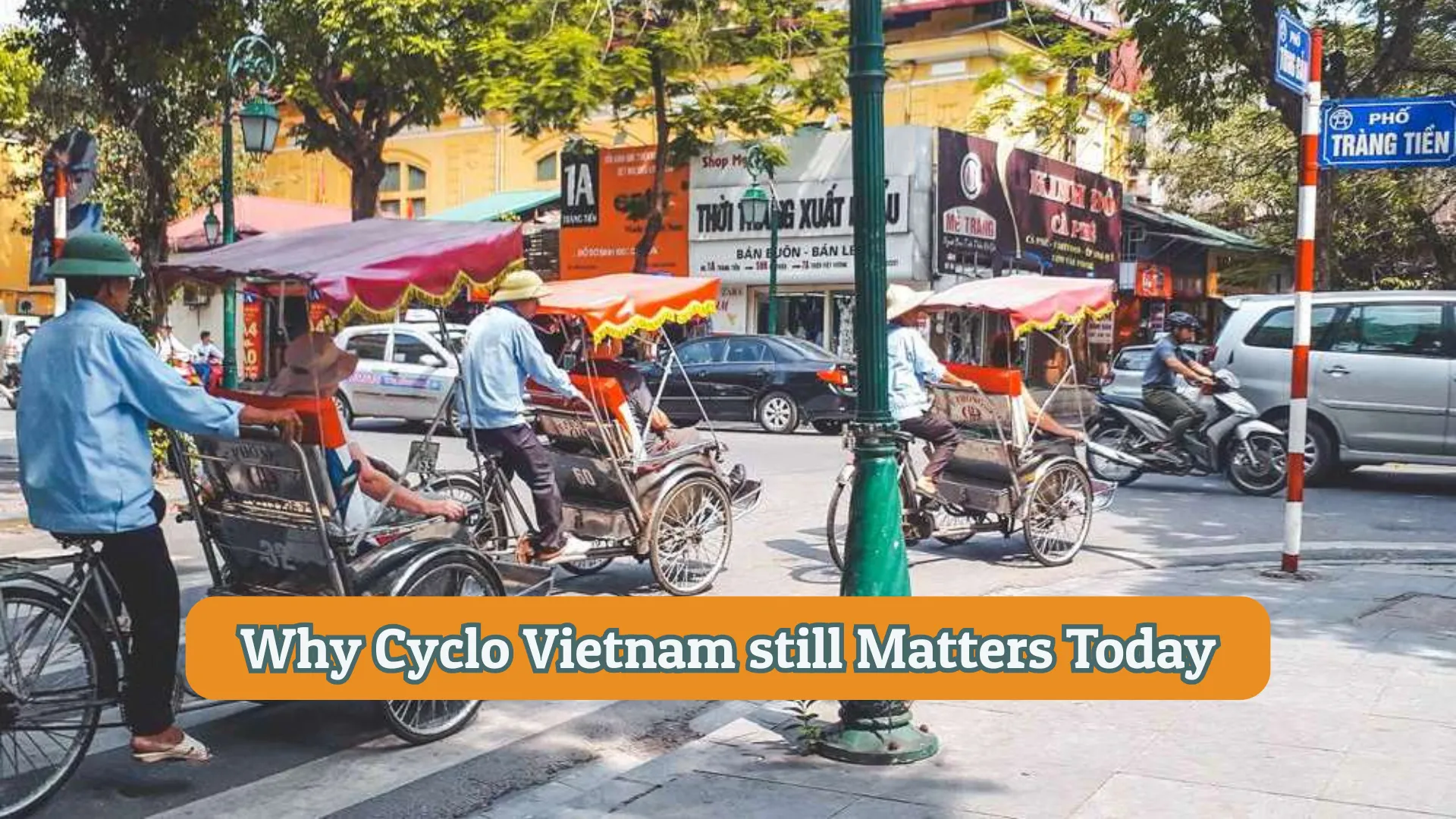
Even though Vietnamese cities now move at the speed of millions of motorbikes, cyclos continue to exist for reasons far deeper than convenience. Their relevance today blends cultural storytelling, heritage preservation, and immersive travel experiences.
A Slower, Immersive Way to See the City
The cyclo’s defining feature is its pace.
At 5–10 km/h, it forces you to experience Vietnam as locals once did - slowly, attentively, closely.
From a cyclo seat, you can see details you would miss on a motorbike or taxi:
- the peeling paint of a French villa on Đồng Khởi,
- steam rising from a phở pot at 6 AM,
- children playing badminton in an alleyway,
- vendors sharpening knives or repairing slippers on the curb.
The cyclo acts like a mobile viewing platform, turning ordinary streets into a continuous documentary of daily life.
Cultural and Photographic Value
Cyclo rides are highly valued by photographers because:
- The front-seat position gives an unobstructed angle.
- Slow movement allows for sharp, controlled photographs.
- The rider’s low eye-level captures scenes at human height - faces, hands, micro-moments.
- Cyclo routes pass through the most atmospheric parts of both cities:
- Hanoi’s Old Quarter, French Quarter, lakeside boulevards
- Saigon’s colonial core, tree-lined boulevards, riverfront
For content creators, the cyclo is the best “camera dolly” on Vietnam's streets.
Human Connection and Street-Level Storytelling
Many cyclo drivers have been working since the 1970s or 1980s. Their lived experience makes them guardians of memory. When they talk, they don’t recite scripted tourist facts - they share pieces of real urban history:
- what downtown Saigon looked like before modern skyscrapers,
- which markets replaced older ones,
- which alleys were once canals,
- how the city changed after Đổi Mới,
- how festivals, weddings, and holidays used to be celebrated.
For many visitors, these spontaneous conversations become the highlight of the ride - a form of oral history impossible to get from official tours.
Heritage Preservation in Modern Vietnam
Today, cyclos function like mobile cultural artifacts. Cities continue to preserve them because:
- They represent an era before economic reforms.
- They reflect the urban rhythms of pre-motorbike Vietnam.
- They keep alive a traditional craft that otherwise would disappear.
- They form a recognizable national symbol featured in tourism campaigns.
The cyclo has become similar to the water puppet, the tà áo dài, or the làng nghề:
a traditional element maintained intentionally for cultural continuity.
Are Cyclo Drivers Trustworthy?

Most cyclo drivers are honest and hardworking. They rely on tourism for income and want to provide a good experience.
However, like any major tourist city, some drivers take advantage of newcomers. Understanding the landscape helps you stay safe.
The Trustworthy Majority
- Friendly, calm demeanor
- Agree clearly on the price
- Keep the ride within discussed duration
- Do not pressure you with extra stops
- Often share stories about the city
The Scam Minority
These drivers typically operate at:
- Ben Thanh Market
- Bui Vien Walking Street
- Certain corners of Hoan Kiem Lake
- Busy Cathedral/Post Office areas
Common issues include inflated prices, USD/VND confusion, or unwanted shop stops.
The key is choosing calm, polite drivers and confirming details upfront.
How to Avoid Cyclo Scams in Vietnam
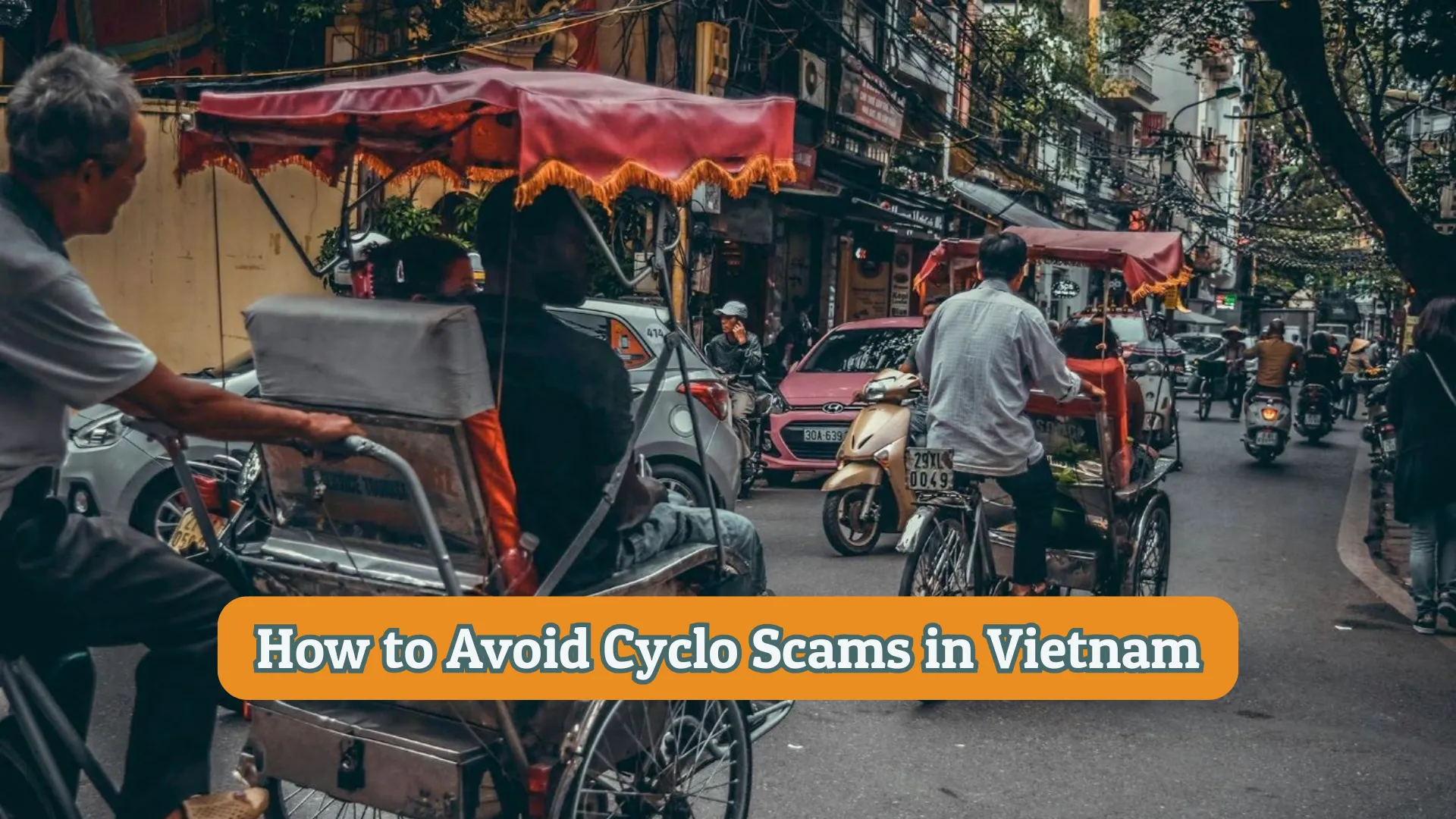
This section gives actionable steps based on real patterns observed in tourist zones.
1. Always agree on the total price before the ride
Say it slowly and clearly:
- “How much total?”
- “Price in Vietnamese Dong.”
2. Confirm the duration: ask for the exact number of minutes and repeat it.
3. Avoid paying upfront: never pay before the ride ends.
4. Avoid hiring at high-risk zones: especially Ben Thanh Market and Bui Vien in Saigon.
5. Reject surprise stops: if a driver insists on visiting a shop, decline politely. This prevents commission-based detours.
6. Choose your driver rather than letting them choose you: approaching a driver yourself shows confidence and reduces scam attempts.
Where to Find Cyclos in Ho Chi Minh City
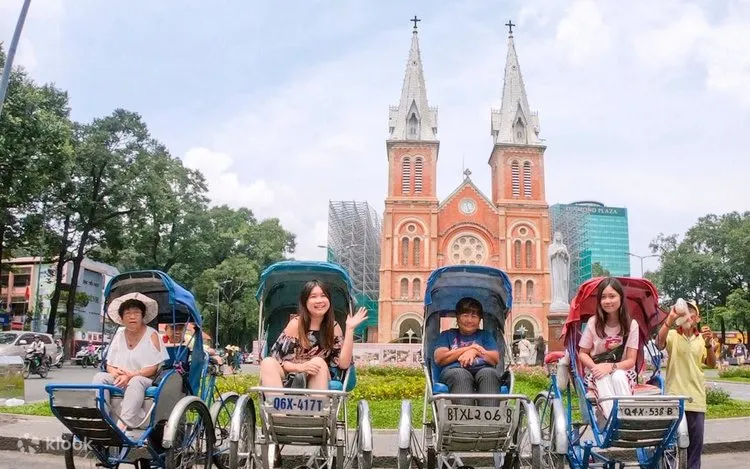
These are the best locations for reliable, scenic cyclo rides in Saigon:
- Opera House (Dong Khoi Street): drivers here are generally calm and accustomed to international travelers.
- Nguyen Hue Walking Street: safe, open, and beautiful in the late afternoon and evening.
- Reunification Palace Area: good for history-focused routes; traffic is more manageable.
- Saigon Riverfront (Ton Duc Thang): ideal for longer, breezy rides near the water.
Areas to avoid: Ben Thanh Market, Bui Vien Walking Street, Cong Quynh Street
These spots have the highest scam reports.
Where to Find Cyclos in Hanoi
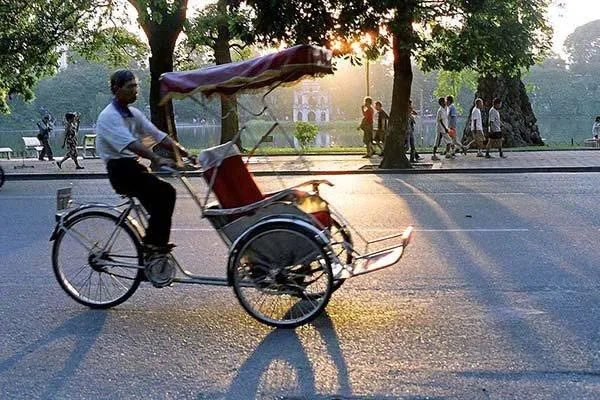
Hanoi offers the best cyclo environment thanks to its preserved architecture and slower pace.
- Hoan Kiem Lake: classic, scenic, and perfect for first-timers.
- Old Quarter: the most atmospheric and culturally rich area to ride a cyclo.
- French Quarter: wider boulevards, beautiful colonial buildings, safer traffic.
- Temple of Literature Surroundings: less crowded, ideal for a calm ride with fewer interruptions.
Areas to avoid: some corners of Dong Xuan Market, late-night Old Quarter (after 10 PM)
How to Hire a Cyclo Correctly
Use this simple 7-step process for a smooth experience:
1. Approach a calm driver yourself.
2. Ask the total price clearly.
3. Confirm the currency (VND).
4. Confirm the duration (minutes).
5. Confirm the route (specific locations).
6. Pay only at the end.
7. Tip only if you feel satisfied.
Following these steps eliminates nearly all risks.
Best Cyclo Tours in Vietnam (Concise Overview)
Comparison & Review: Top 4 Hanoi Cyclo Tour Options
Hello, based on your interest in a cyclo experience in Hanoi, I have selected the 4 most outstanding options currently available. Each tour has a completely different price point and service level. Below is a detailed analysis to help you choose the one that best suits your needs:
1. Dragonfly Cruise: "Budget-Friendly & Free" for Independent Travelers

This is the most economical choice if you just want to experience the feeling of sitting on a cyclo around the city without a guide or included dining services.
- Reference Price: From $10 USD/person.
- Duration: Approximately 1 hour (flexible timing).
- The Experience: The driver pedals you around the Old Quarter, passing Dong Xuan Market, the Opera House, and the Cathedral for photo opportunities.
- Note:
- Cyclo drivers often have limited English proficiency, so deep communication about history may be difficult.
- This price excludes entrance fees, food/drinks, and gratuities.
- Verdict: Suitable if you want to save money, take quick check-in photos, and handle your own dining afterward.
2. GetYourGuide (Full-Day City Tour): "Comprehensive VIP Package & Best Peace of Mind"
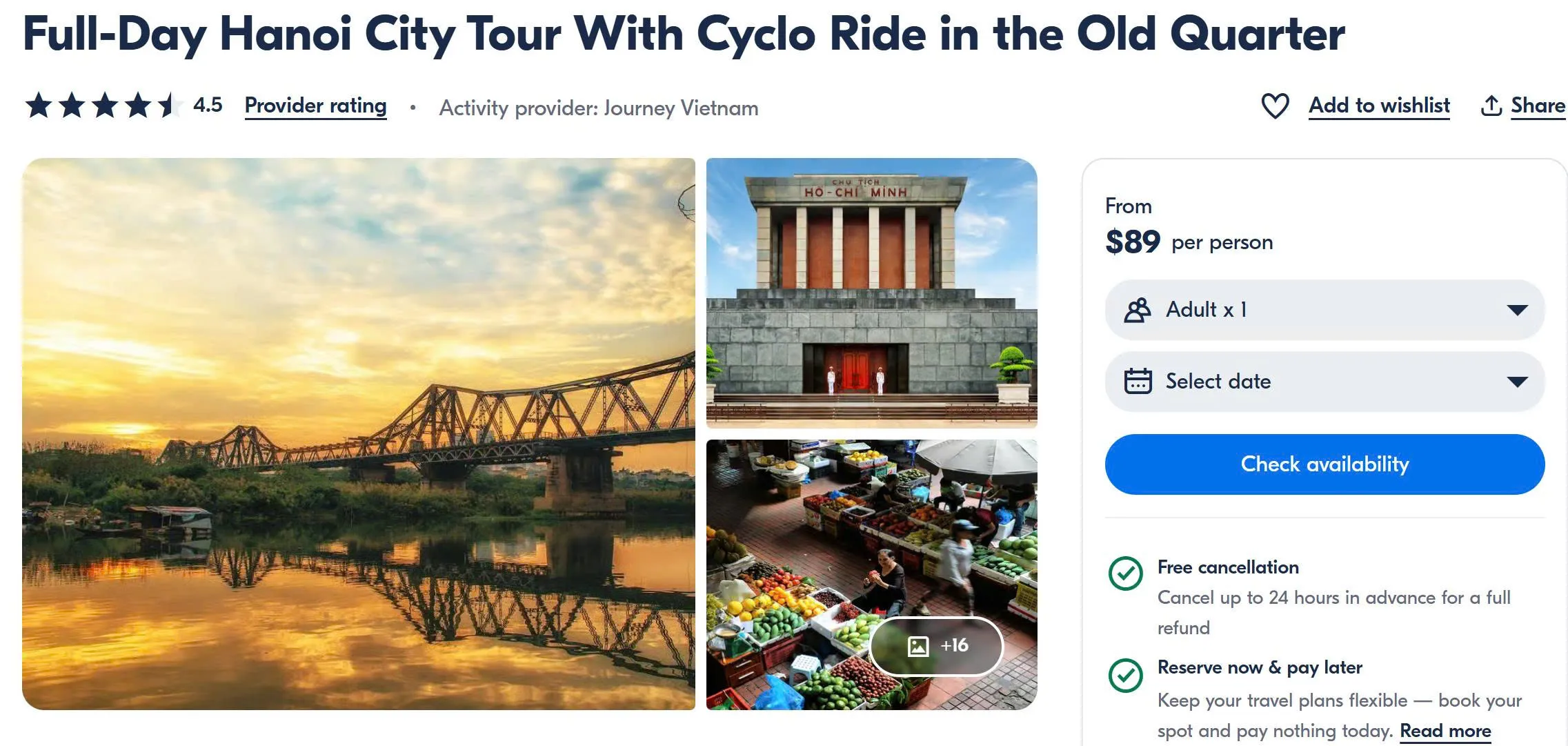
This is not just a cyclo ride, but a high-quality, all-inclusive full-day tour of Hanoi (small group format).
- Reference Price: From $89 USD/person.
- Duration: 1 Full Day.
- VIP Services:
- Transportation via luxury air-conditioned Limousine Minivan.
- Small group limited to a maximum of 8 participants, ensuring personal attention.
- Includes a Vietnamese lunch , entrance fees to all sites , and a 1-hour cyclo ride in the Old Quarter.
- Major Plus: Free Cancellation policy (full refund if canceled 24 hours in advance) – very safe for your schedule.
- Verdict: The best "Value for Money" choice if you want a complete, comfortable day touring Hanoi without worrying about extra costs.
3. Viator (Half-Day Private Tour): "Private but Strict"
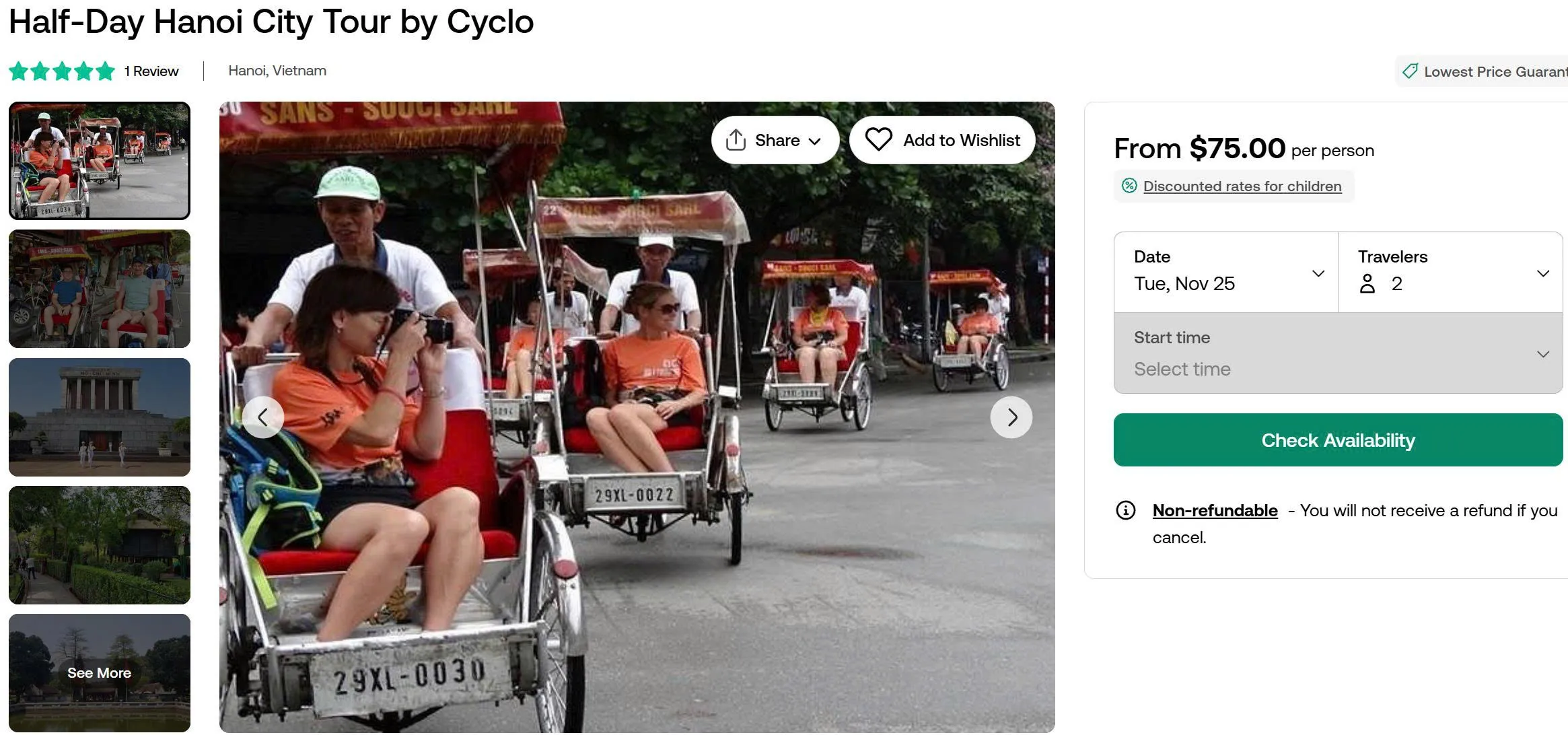
This tour is for those who prefer absolute privacy (Private Tour), featuring a personal guide for deep historical insights over half a day.
- Reference Price: From $75 USD/person.
- Duration: 4 hours (Morning or Afternoon).
- The Experience: Visit the Mausoleum, Temple of Literature, B-52 Lake, and the Old Quarter with a private guide. Entrance tickets are included.
- Important Note: The cancellation policy is very rigid – Non-refundable in any circumstance. If you have a sudden schedule change, you will lose this amount. Meals are not included.
- Verdict: Only choose this if you strictly need privacy and are 100% certain of your schedule.
4. Vietnam Discovery (Evening Tour): "Cultural & Romantic Evening Combo"

This tour is specifically designed for the evening, combining sightseeing with art and cuisine.
- Reference Price: From $93 USD/person.
- Duration: Evening (approx. 0.5 day).
- The "Elite" Experience:
- Cyclo ride to see Hanoi lit up at night.
- Enjoy a traditional Water Puppet Show.
- Finish with a local dinner delicacy: Pho Bo (Beef Noodle Soup).
- Services: Includes hotel transfers, show tickets, and an English-speaking guide.
- Verdict: An excellent choice for VIP guests or couples looking for a romantic evening rich in Hanoi's culture without the hassle of booking tickets or finding restaurants.
MY RECOMMENDATION:
- If you want to save money and be independent: Choose Dragonfly ($10).
- If you want an all-inclusive, worry-free day (food, sightseeing, luxury transport) with a safe cancellation policy: Choose GetYourGuide ($89). This is the tour I recommend the most.
- If you want to experience Hanoi by night: Choose Vietnam Discovery ($93).
Please review the options and let me know which one you prefer so I can assist you with the booking!
Comparison Review: Top 4 Best Saigon Cyclo Tours
Hello, based on the available options, I have selected the top 4 cyclo tours in Ho Chi Minh City. Depending on your budget and interests (sightseeing only, including meals, or deep history), here are the best choices:
1. Klook: "Best Value" (Ride + Meal Combo)

This is the most economical choice. You get both the cyclo ride and a Vietnamese meal included.
- Reference Price: ~$16 USD (Discounted).
- Duration: 1 Hour + Dining time.
- Experience:
- 1-hour ride passing major landmarks: Notre Dame Cathedral, Post Office, Independence Palace.
- Ends with a Vietnamese lunch or dinner at Cyclo Resto.
- Pros: Incredible price for both transport and food. Free cancellation up to 24h.
- Verdict: Best if you want a fun, quick snapshot of the city and a sorted meal plan on a budget.
2. Saigon Adventure: "The Explorer's Choice" (Mid-Range)
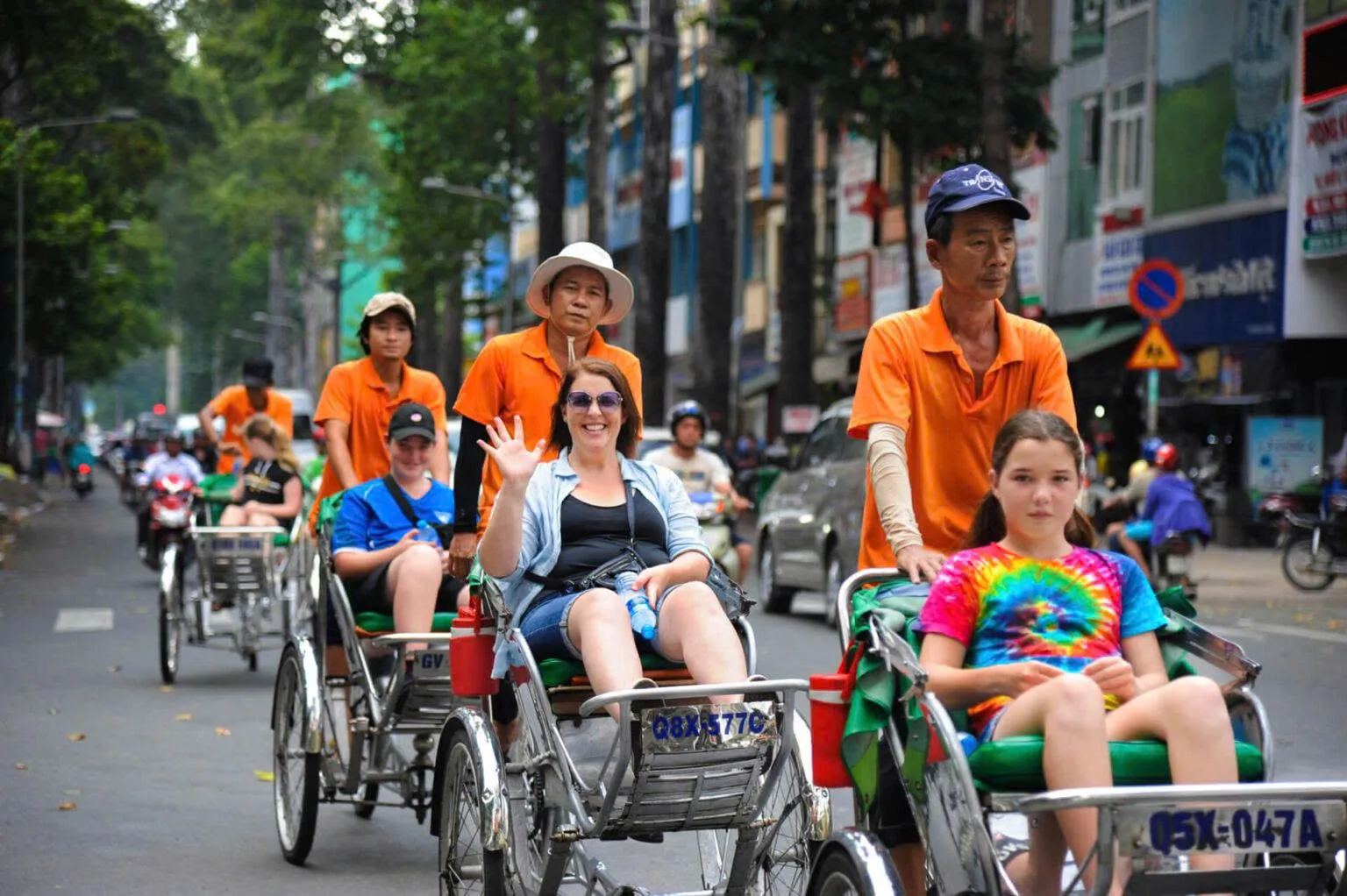
This tour offers the best balance of duration and quality, organized by a Top #1 TripAdvisor operator.
- Reference Price: From $30 USD.
- Duration: 3 Hours.
- Experience: Uniquely offers 2 itinerary options:
- Option 1: Spectacular Landmarks (Opera House, River, Palace, etc.).
- Option 2: Hidden Gems & Markets (Flower Market, Chinatown, Old Apartments).
- Pros: Very flexible cancellation (full refund up to 12 hours prior). No hidden costs.
- Verdict: Excellent choice if you want to see more of the "real" Saigon (3 hours duration) rather than just a quick glance.
3. Maika Tours (Direct Booking): "The Smart Choice"

Offered by Maika Tours, a highly reputable operator, but booking direct offers a lower starting price point.
- Reference Price: From $32 USD.
- Highlights:
- Internationally licensed operator.
- Focuses on authentic experiences.
- Verdict: Perfect if you want high-quality service from a top-rated company without committing to the full VIP package price.
4. GetYourGuide (by Maika Tours): "The VIP All-Inclusive"
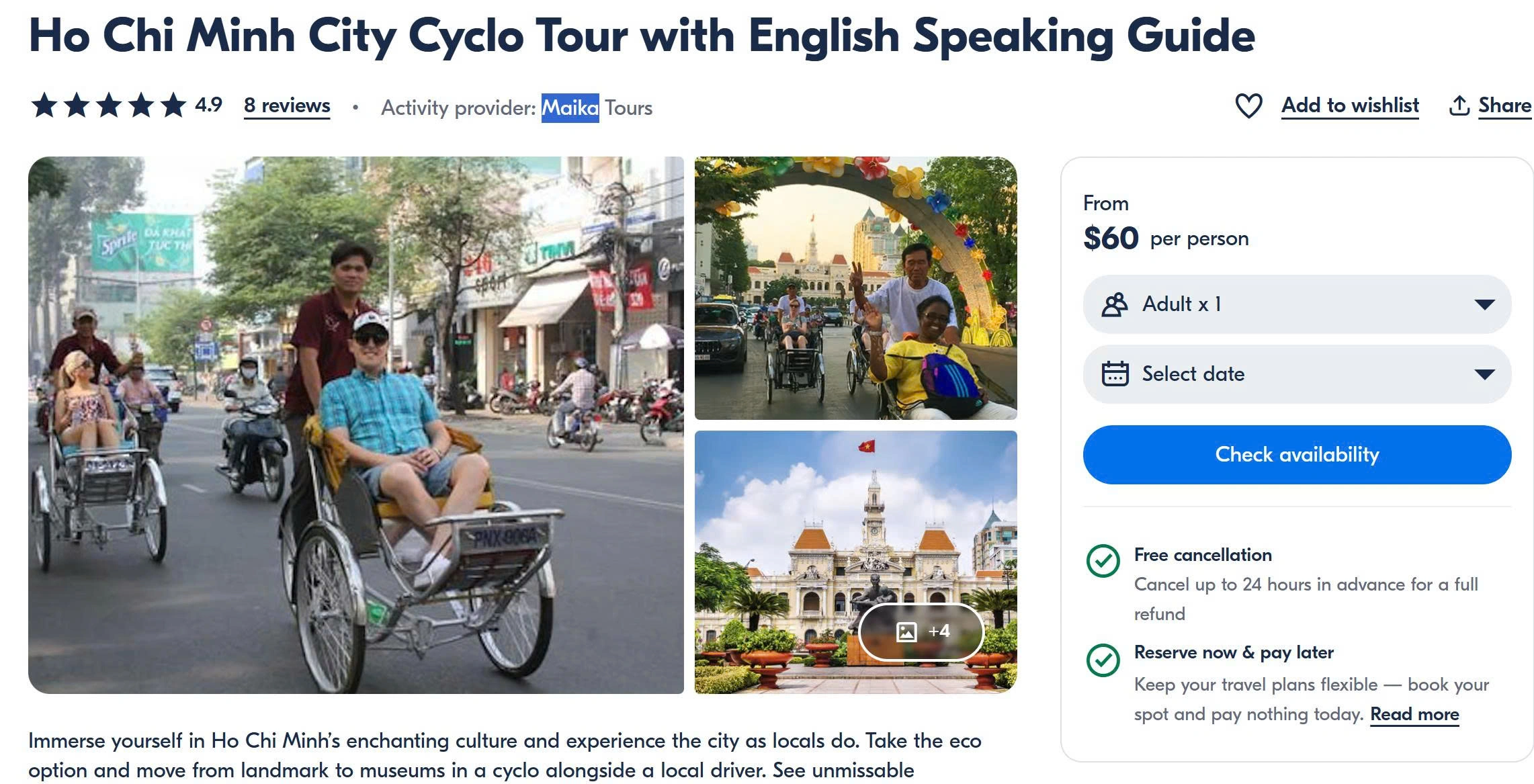
The premium version (also operated by Maika Tours), designed for a completely hassle-free half-day experience.
- Reference Price: From $60 USD.
- Duration: 4.5 Hours (Half-Day).
- VIP Services:
- Includes a professional English-speaking guide.
- Includes all entrance fees (War Remnants Museum, etc.).
- Includes snacks (Banh Mi) and water.
- Verdict: The "Premium" option. Ideal for VIP guests or history buffs who want to visit museums and learn deeply about the city with a private guide taking care of everything.
MY RECOMMENDATION:
- For Budget: Choose Klook ($16).
- For Adventure (3 Hours): Choose Saigon Adventure ($30) - Highly recommended for seeing local life and markets.
- For History & Comfort: Choose GetYourGuide ($60) - Best for a comprehensive historical tour with no extra costs.
Conclusion: The Cyclo Is Vietnam's Classic Snapshot. Vespa Is the Full Story.
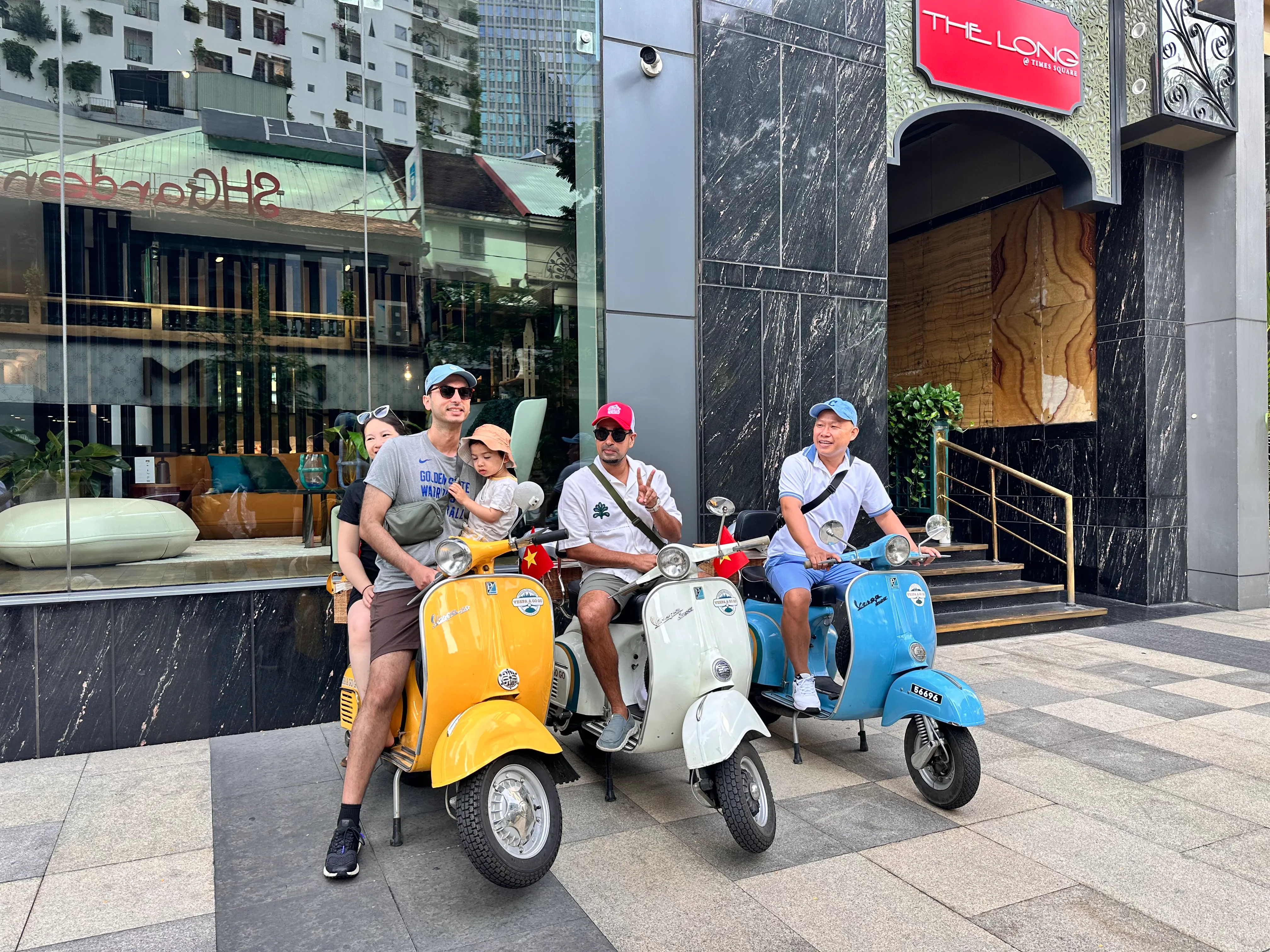
A cyclo ride offers something few modern vehicles can replicate: a symbolic, slow-paced, and deeply authentic glimpse into Vietnam’s urban life. Sitting at street level, you see the city as it truly is - raw, intimate, unfiltered. You watch vendors prepare food at arm’s length, feel the rhythm of traffic moving around you, and experience the city at a human speed. Cyclo Vietnam remains valuable precisely because it preserves this perspective, allowing you to step briefly into the Vietnam of earlier decades.
But if you want an experience that goes beyond the postcard - one that dives deeper into local neighborhoods, travels farther than District 1 or the Old Quarter, and brings you closer to real street culture and food communities - then a vintage Vespa offers something the cyclo simply cannot. It gives you mobility without losing the connection to the street. You hear the city, smell the food stalls, and weave through alleys, markets, and districts where cyclos no longer operate.
At Vespa A Go Go, the philosophy is the same as the cyclo at its best: authenticity, human connection, genuine local storytelling. What we add is range, depth, and modern safety - letting you experience Saigon not just from the surface, but from within its living, breathing energy.
In essence:
- A cyclo ride is the postcard - charming, nostalgic, beautifully still.
- A Vespa ride is the documentary - dynamic, layered, and alive.
When you're ready to explore Saigon beyond the postcard, your Vespa is waiting.
Sang Nguyen - General Manager
I've always been fascinated by the stories behind things. For me, every street corner in Saigon, the historic heart of Ho Chi Minh City, has a tale to tell. For the last 10 years, my passion has been sharing these stories. I want to help you see beyond the surface, to feel the history, and truly connect with the culture that makes this city so special.
Other tips
- Islam in Vietnam: Distinct from the Rest of the World
- Cyclo Vietnam: The Insider Guide to Vietnam’s Most Iconic Pedicab Experience
- Is the Water Puppet Show Worth It? An Honest Review & Deep Dive into Vietnamese Water Puppets History
- Celebrating Mid-Autumn Festival in Vietnam 2025 | The Ho Chi Minh City Insider's Guide
- What's happening on September 2nd in Vietnam? Vespa A Go Go Explains It All!
- Vietnam Independence Day: 80 Years. One Unforgettable Celebration
- Beyond the Sights: An Insider’s Guide to the Soulful Music of Vietnam
- Vietnamese tea: Sip for the hospitality and connection
- A Journey Through Important Vietnam War Battles (1954-1975): From the Local Perspectives
- The Living Altar: A Traveler's Guide to Ancestor Worship in Vietnam
- The Languages of Vietnam: A Colorful Chorus Through History and Today


